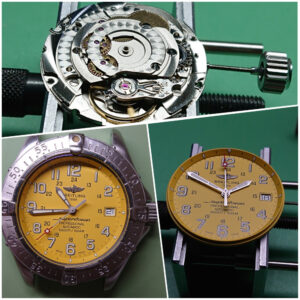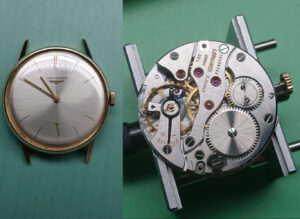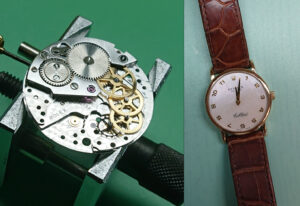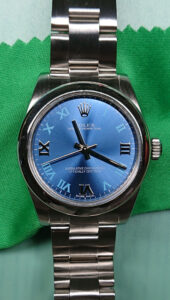Another top brand we regularly see in our workshop is Breitling. Breitling watches are excellent quality and the brand is known primarily for their aviation inspired models.
The watch with us for repair today is a Breitling Superocean. As the name would suggest, the Superocean is actually a watch designed for use in water – these watches have a high degree of water resistance and this model’s yellow dial and luminous hands/numbers makes it very legible even in low light conditions.
Initial inspection revealed the watch to not be working. The hands and date setting were functional, but there was an awful lot of resistance when attempting to manually wind the watch. The movement (based on an ETA calibre 2824-2) hadn’t been serviced in many years – there was a fair amount of debris alongside the usual dried up oils and greases too. A full service and fresh mainspring was in order!

The watch is completely stripped down before the movement parts are thoroughly cleaned. We clean parts both by hand and then using a specialist watch movement cleaning machine – this way we can be certain everything is in good order and as clean as we can possibly make it.
After cleaning, rebuilding and oiling of the mechanism can begin. We use a number of different oils and greases in different parts of the mechanism. We follow the manufacturers guidance for this, including the use of epilame treatment on a number of parts to prevent the spread of oils.
The case and bracelet are given a thorough ultrasonic clean and we can then reassemble the complete watch. After pressure testing for water resistance, this wonderful Breitling Superocean goes on our automatic watch testing machine as part of its final testing before release to our client.
Yours sincerely
David Clark DGA PJDip PJGemDip CertGA
Managing Director
W.E. Clark & Son Limited









